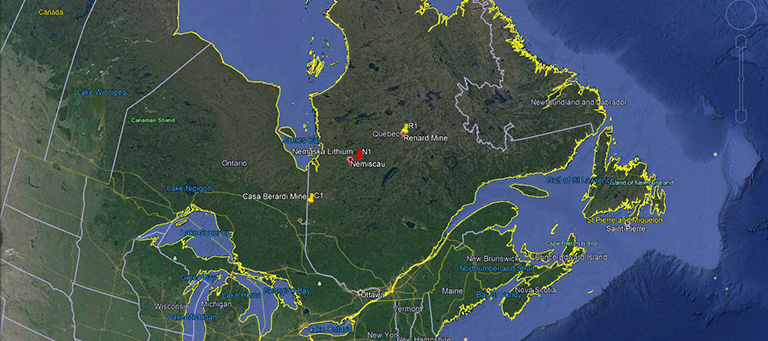
NSERC-UQAT Insdustrial Research Chair on northern biodiversity in a mining context
Lichen communities of peatlands in Eeyou Istchee James Bay: Biodiversity and environmental factors
Lichen communities of peatlands in Eeyou Istchee James Bay: Biodiversity and environmental factors
Master Project of Tana Route
Director: Nicole Fenton (UQAT-FIR)
Collaborators: André Arsenault (Natural Resources Canada) and Louis Imbeau (UQAT-FIR)
This project is primarily aimed towards studying lichen biodiversity in four peatland habitat types occurring in the Eeyou Istchee Baie James: uniform bogs (ombrotrophic), uniform black spruce bogs (ombrotrophic), uniform fens (minerotrophic), and riparian fens (minerotrophic). To serve these ends, three roughly equidistant study sites were chosen, each 10,000 km2 and centered around a mine. Casa Berardi Gold Mine (Hecla Mining Company) is the furthest south and west, Whabouchi Mine (Nemaska Lithium) is over 300 km further northwest, while Renard Mine (Stornaway Diamonds) is a little less than 300 km beyond that to the northeast. This covers gradients not only of south to north and west to east, but also from lower to higher elevations and wetter to dryer territory respectively.
Analysis will be conducted to better understand how certain environmental factors may contribute to the occurrence of different lichen communities in different peatland types. These environmental factors include: relative air humidity, light availability, substrate availability, tree/stand age, climate, and disturbance (for example from fires, beaver activity, or humans). The project will also assess the ability of remote sensing to predict lichen communities in these peatlands over the broader area of the Eeyou Istchee Baie James, another resource management tool.
This study is particularly important given the lack of knowledge about the diversity of lichens in this huge region, where several human developments are planned over the next few years, including mining projects (Société du Plan Nord). A better knowledge of the lichen species present in the different types of peatlands as well as a greater knowledge the potential importance of one peatland type over another, will allow better decision-making regarding the territory use and development. Indeed, this project will contribute to the ecological classification of the wetlands of James Bay. In addition, this study may serve as a basis for further research and monitoring. The knowledge generated by this study will provide a better understanding of the lichen communities in the Eeyou Istchee James Bay region, which will then be able to establish the basis for understanding the impacts of anthropogenic developments, climate change, and other disturbances.


Information
Nicole Fenton, professor titular of the NSERC-UQAT Industrial Research Chair on northern biodiversity in a mining context
Forest Research Institute (FR)
Telephone: 819 762-0971 poste 2312
Email: nicole.fenton@uqat.ca